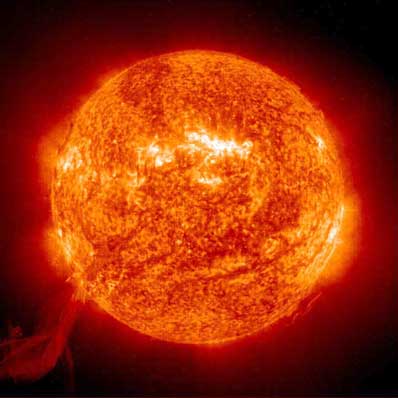The Japanese government has launched a campaign encouraging people to go to bed and get up early. The Morning Challenge campaign, unveiled by the Environment Ministry, is based on the premise that swapping late night electricity for an extra hour of morning sunlight could significantly cut the nation's carbon footprint. A typical family can reduce its carbon dioxide footprint by 85kg a year if everyone goes to bed and gets up one hour earlier. It is the latest initiative tackling climate change to reduce carbon dioxide emissions by 25 per cent from 1990 levels within the next decade.
Saturday, June 26, 2010
Wednesday, June 23, 2010
English Supporter
 African Grey parrot, Benji, is a parrot that squawks "Come on Rooney" everytime the striker plays
African Grey parrot, Benji, is a parrot that squawks "Come on Rooney" everytime the striker playsBenji's owners Stephen Borrill, 46, and wife Ruth, 47, have decked out their house in full World Cup regalia and say their patriotic pet is a huge England fan.
"Benji loves cheering on the football. He is a right chatterbox," Mr Borrill said. "He picks up most of his expressions from Ruth," he added.
Mrs Borrill spent a month teaching Benji the names of the England players for World Cup 2010 to stop him getting confused with the 2006 World Cup squad.
"He'll be watching the game on Friday and supporting the team along with us," she said.
"When he gets over-excited about the game he gets his catchphrases all muddled up, which is so funny."
Tuesday, June 22, 2010
Solar Music
 The sun has been the inspiration for hundreds of songs, but now scientists have discovered that the star at the center of our solar system produces its own music.
The sun has been the inspiration for hundreds of songs, but now scientists have discovered that the star at the center of our solar system produces its own music.Astronomers at the University of Sheffield have managed to record for the first time the eerie musical harmonies produced by the magnetic field in the outer atmosphere of the sun.
They found that huge magnetic loops that have been observed coiling away from the outer layer of the sun's atmosphere, known as coronal loops, vibrate like strings on a musical instrument.
Using satellite images of these loops, which can be over 60,000 miles long, the scientists were able to recreate the sound by turning the visible vibrations into noises and speeding up the frequency so it is audible to the human ear.
Professor Robertus von Fay-Siebenburgen, head of the solar physics research group at Sheffield University, said: "It was strangely beautiful and exciting to hear these noises for the first time from such a large and powerful source... It is a sort of music as it has harmonics." "It is providing us with a new way of learning about the sun and giving us a new insight into the physics that goes on at in the sun's outer layers where temperatures reach millions of degrees," he added. The coronal loops are thought to be involved in the production of solar flares that fling highly charged particles out into space, creating a phenomenon known as space weather.
Monday, June 21, 2010
Balloons Of Korea
 Amid growing military tensions between North Korea and South Korea, Seoul mobilised troops and police early on Thursday after a resident of Ansan, 22 miles south-west of the South Korean capital, reported that 40 to 50 flying objects resembling parachutes had fallen on a mountain the previous night. Upon inspection, the objects were identified as helium balloons released by children at a nearby school.
Amid growing military tensions between North Korea and South Korea, Seoul mobilised troops and police early on Thursday after a resident of Ansan, 22 miles south-west of the South Korean capital, reported that 40 to 50 flying objects resembling parachutes had fallen on a mountain the previous night. Upon inspection, the objects were identified as helium balloons released by children at a nearby school.Tensions on the Korean peninsular have been high since the sinking of the South Korea's warship earlier this year. Seoul has said that the ship was torpedoed by North Korean vessels
Earlier this month, an explosion Yeonpyeong Island, near the sea border with North Korea, along with the discovery of a diving suit on the island's shoreline, also sparked an alert.
A joint military and police investigation found that the diving suit was abandoned by a fisherman and the explosion was not suspicious.
Subscribe to:
Comments (Atom)
